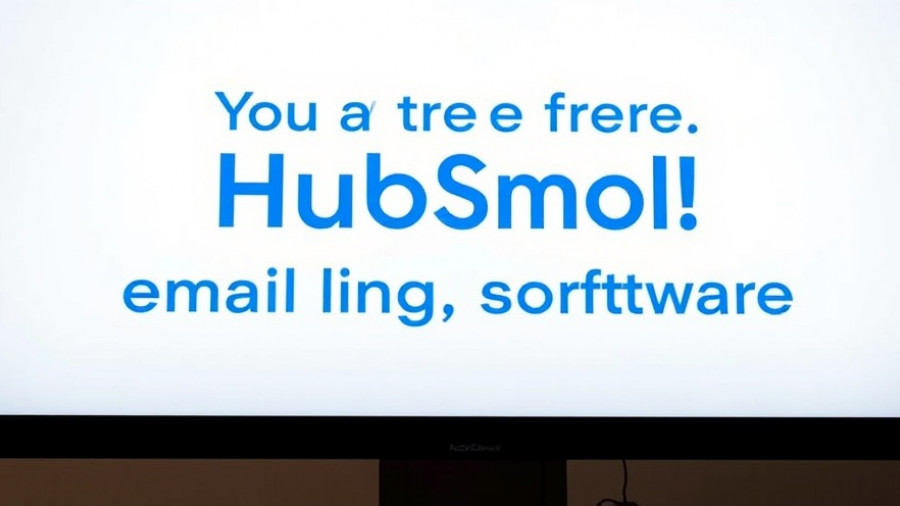
The Future of Email Marketing in Higher Education
As we enter 2025, higher education institutions are increasingly relying on email marketing to forge stronger connections with their diverse audiences. Institutions face multiple communication challenges, including recruiting prospective students, engaging current learners, and fostering relationships with alumni. Surprisingly, 55% of prospective students prefer email communication over texts during the college application process, according to recent research. This statistic underscores why educational institutions must invest in robust email marketing tools to enhance their engagement strategies.
Why Email Marketing is Critical in 2025
Email marketing is proven to generate higher open rates than many other digital platforms, making it a crucial communication method for colleges. In fact, the education sector enjoys an average email open rate of 28.5%, significantly higher than other industries. This robust data indicates that effective email campaigns can play a vital role in supporting enrollment management and student retention initiatives.
Top Email Marketing Tools for Higher Education
Choosing the right email marketing platform can have monumental impacts on how institutions connect with their audiences. Here are some leading tools that cater specifically to the needs of higher education:
- HubSpot: Ideal for universities looking for a comprehensive CRM and email marketing automation solution. Offers features like audience segmentation, advanced analytics, and a free plan for institutions just getting started.
- Mailchimp: A great choice for smaller institutions with basic email marketing needs, Mailchimp provides a user-friendly interface, drag-and-drop design tools, and strong analytics. Its pricing model is accessible, starting free for limited contacts.
- Constant Contact: Tailored for schools needing event management functionalities alongside email marketing, Constant Contact facilitates automated processes and social media integration.
- ActiveCampaign: Focused on advanced automation tools, ActiveCampaign is perfect for colleges looking to streamline workflows with over 900 built-in automation templates.
- Omnisend: This platform specializes in multi-channel marketing, offering SMS integration and ecommerce functionalities that can enhance course sales.
- Envoke: For Canadian institutions, Envoke ensures compliance with CASL, making it a reliable choice for universities prioritizing data privacy regulations.
Best Practices to Follow
Implementing a successful email marketing strategy involves several best practices. First, building a permission-based email list is crucial for engaging prospective students authentically. Ensuring every recipient has opted in to receive communications fosters trust and increases engagement rates.
Additionally, segmentation of email lists based on audience interests allows for tailored messaging that resonates with specific groups, enhancing the effectiveness of campaigns. For example, prospective Nursing students can receive specialized content tailored to their career ambitions, while international students may benefit from guidance on visa processes.
Future Insights for Educational Institutions
Looking ahead, it’s clear that email marketing will continue to be a cornerstone of effective communication for higher education. Institutions that embrace these evolving tools and strategies can expect to enhance their outreach efforts, drive student engagement, and ultimately improve enrollment and retention rates. By investing in user-friendly platforms and adhering to best practices, colleges and universities will be better equipped to thrive in the competitive educational landscape of 2025.
 Add Row
Add Row  Add
Add 




Write A Comment